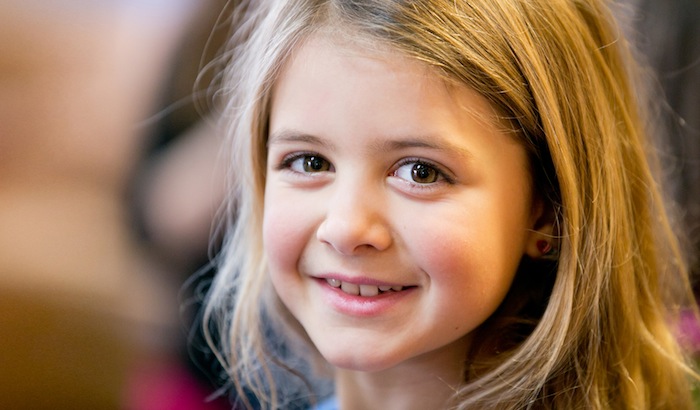
Each child in the lower school at a Waldorf School makes beautiful music every day. With their class teacher, in chorus, in strings or in music class, they are gaining not only musical skills and knowledge but also a strong sense of musicality. Naturally, we want the children to be musical, but in Waldorf music education the intention is that their musicality goes beyond melody, harmony and rhythm. The music instruction is presented in such a way as to encourage musical living.
Open the paper and browse through the classified ads for jobs. The sought after job-specific skills vary. The qualities sought, however, are fairly consistent. “Listener”, “team-builder”, “flexible” and “good communication skills” are among the litany of qualitative demands placed on job applicants today. Perhaps you’ve had the misfortune of working with a colleague who lacks these skills. However knowledgeable or skilled they may be, nobody can stand to have them around the office! These unfortunate individuals lack music in their lives. Perhaps not music per se, but the “transformed music” that our music program strives to bring to EWS students.
In grades 1 – 3 at Emerson Waldorf School (EWS) for example, the music instruction is almost wholly qualitative. The students spend their time in music class playing their flutes, the lyres or specially designed Choroi instruments that are unique to Waldorf music education. Through their exploration, they experience the essential qualities of music: high, low, fast, slow, long, short, etc. This work is really only the vehicle, though. The real goal is to help the students become sensitive, active listeners. They gradually become stewards of tone, and their faces shine in wonderment when they discover how much more beautiful their music-making is when the whole roomful of students is really listening actively and intently, with a will. They play games such as “passing the tone” with their flutes, or they may try to imitate exactly what they hear on the lyre. With the Choroi instruments, they create wonderful shimmering sounds that capture a picture or story that they’ve heard. Most importantly, they don’t make music the entire time. Classes are always divided in the activities so that some of the students are involved as listeners while the others are the creators of music. In these early grades, the students are learning very tangible lessons in careful listening, and the effects that willful listening has. Imagine if the world had more adults who had had the opportunity to become careful, intentional listeners. This is where the musical activity of listening first becomes “transformed music”, when the children can begin to generalize their activity as listeners in the music classroom to their lives in the outside world.
In the middle grades of the lower school, classes 4 and 5, the music education sets its sights on literacy and more standard music-making. The children learn to read and write music, and they learn the names for all of the fundamental music concepts. They also begin playing a string instrument, and have their first experience of needing to practice and work at learning this new, awkward skill. They also have the experience of really making music as a group of students playing different instruments. Although the children are enthusiastic when they begin their string instrument, some of them begin to experience a real antipathy as they realize just how difficult it is to actually read music and make a pleasing sound. This is a critical juncture. Those students who can muster the determination to overcome the difficulties in learning an instrument as challenging as a violin, viola or cello have learned a critical life-lesson in perseverance. We as adults know what they’re discovering; anything difficult will seem the most impossible and trying just before one makes a breakthrough.
In the fifth grade, every child also joins the chorus. Chorus class is a focused, rather intense rehearsal. Once again, the children are learning valuable lessons in perseverance. Some challenging pieces may take our group of 40+ choristers four months to learn. In the end, though, they always succeed. In addition to their lessons in perseverance, the children experience something extremely subtle in chorus. They must sing and listen at the same time. They learn that everyone must do their best for the whole effect to be successful. They learn that overzealous participation spoils the whole effort. They learn to be a part of the group and to play their part appropriately and responsibly within in the group. The feedback is immediate. The child who wants all the attention spoils our sound by being too loud. Those who wait for others to lead before following are caught with their mouths closed while everyone else is singing. What’s more, the experience of singing in harmony offers profound lessons. Sometimes one sings the lead melody part, while sometimes one has the harmony part. Whether in the primary or secondary role, doing well is critical to the outcome of the group’s overall effort, and one must be constantly aware of the role their effort is playing, whether leading or supporting. Most of the selections we perform demand that the lead voice changes between groups of students. Here the children learn the subtle interplay of passing leadership gracefully between members of a group.
In the middle and high school, the children have an intense need to be creative and express themselves. If this isn’t immediately clear, please go out into the culture at large and simply observe some of the clothing adolescents favor! At its worst, teens go so far as to actually create cliques or even gangs for themselves. Here is where the arts offer a true outlet and antidote. Teens who are engaged in performing groups have a safe, productive outlet for their need for creative expression. Last year, Emerson Waldorf School adopted a plan that would ensure that every child plays an instrument through eighth grade. Over time, the music program will evolve so that the students are all in performing ensembles during their middle and high school years. The training in both subtle and practical music skills of the early years will come to fruition in middle school performance ensembles and, ultimately, the high school orchestra.
The Waldorf music curriculum is as rich and subtle as every other facet of this remarkable approach to education. While it has the ability to produce fine musicians, its true aim is to help produce fine human beings. These Waldorf graduates go forth into the world with the tools our age so desperately needs for cultural renewal. They are active listeners, able to really hear not only what meets the ear but also the impulse and intentions that are truly behind the mere physical sound. They understand that working in the physical world takes effort, perseverance and a refinement of skills. They have experienced the dynamics of working within a group of peers with differing abilities in order to produce something fine, beautiful and meaningful. At our school, the students have had the chance to experience the finer, subtle aspects of music-making. As the graduates leave the school, it is our hope that they are able to allow those aspects to blossom in every aspect of their lives so that they may experience the fulfillment of truly living musical lives. 

This article first appeared in Insights: Into Waldorf Education, Issue 5, Spring 2007 • © 2007 Jason Child
Jason Child is the Director of Music at Emerson Waldorf School in Chapel Hill, NC. He teaches music classes for grades 1-8 and directs three choirs grades 5-12. Mr. Child holds a Master’s in Music Education and has been teaching vocal and general music in public and private schools since 1992.

Sorry, comments are closed for this post.